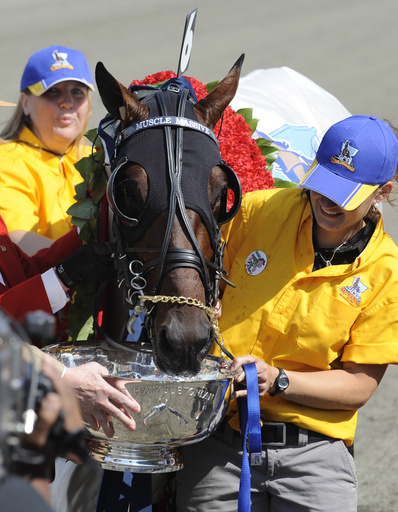Raised in a household deeply rooted in horse racing in Ontario, John Campbell was aware of the prestige associated with the Hambletonian. Witnessing his close friend Ray Remmen clinching victory at the Hambletonian’s inaugural race at the Meadowlands in 1981 had a lasting impact on him.
“The significance of it was colossal,” Campbell reflected. “It was undeniably exceptional.”
This Saturday, the Hambletonian, the premier event in harness racing, marks a milestone with its 100th running. While harness racing doesn’t command the same attention it once did in the U.S., the Hambletonian’s rich history and growing allure in Europe have contributed to its enduring presence.
“It’s quite remarkable that this event continues 100 years later, something likely unforeseen at its inception,” expressed Campbell, a legendary Harness Racing Hall of Fame driver, who claimed the Hambletonian title a remarkable six times. His participation spanned a record 32 consecutive years from 1983 to 2014. “Its endurance is a testament. The race endured through the Great Depression, World War II; it was a constant presence.”
Now, as president and CEO of the Hambletonian Society, Campbell has overseen the race named after the progenitor of standardbred horses through shifting times. The event’s prize, now at $1 million, reflects an immense growth from the initial $75,000 during the first race in 1926 at the New York State Fair in Syracuse.
The race traveled through cities such as Lexington, Kentucky; Goshen, New York; and Du Quoin, Illinois, before establishing its stage in East Rutherford, New Jersey.
“Gas rationing during the war meant relocating it to Yonkers,” noted Tom Charters, who contributed to the Hambletonian Society from 1984 to 2017, including a significant tenure as president. “The race’s varied venues contribute to its charm.”
Another unique tradition is the winning horse drinking from the trophy, an idea Charters ensured remained part of the ceremonious tradition—always aligning the race name and horse logo for the cameras.
“For me, it became as iconic as the milk-drinking tradition at Indianapolis,” Charters compared, referencing the celebrated Indy 500 custom.
Campbell cherishes numerous memories, particularly those of winning. His maiden victory with Mack Lobell in 1987, the success with Tagliabue—named after esteemed NFL Commissioner Paul Tagliabue, trained by his brother Jim, in 1995, and Glidemaster’s victory in 2006 reviving his post-injury career, are close to his heart.
Chris McErlean, who was involved with the Meadowlands from 1992 to 2007, recalls standout races like filly Continentalvictory triumphing in a male-dominated field in 1996, amateur Malvern Burroughs’ victory with Malabar Man in 1997, and the 2000 win by Swedish owner/trainer/driver Stefan Melander with Scarlet Knight, following efforts to boost European participation.
“It transformed into a global phenomenon,” McErlean stated, noting the surge in international interest.
Such interest has burgeoned across Scandinavia and even into France, as evidenced by the predominantly European-trained field this year.
Moira Fanning, who has served at the society since 1987 and advanced to chief operating officer in 2017, anticipates over $9 million in global wagering for the Hambletonian’s centenary race. Fanning attributes this to strategic cross-promotion with Saratoga Race Course and national broadcasting maintaining its spotlight, even though the expected on-site attendance now ranges between 8,000-10,000.
In 2005, 31,000 enthusiasts packed the previous Meadowlands, but now the capacity is about a third of that.
“Harness racing is primarily a regional sport. It has been overshadowed as tracks closed,” Fanning observed. “The monopoly it had on gambling for 200 years is gone, requiring substantial effort to keep it prominent on national television and maintain its major days.”
Often likened to the Kentucky Derby in the world of harness racing, Fanning notes the Hambletonian may be the one race familiar to the mainstream. Despite the challenges faced by the sport, it still holds significant stature and remains an alluring prize.
“Even with the challenges faced by the industry and the decline from its peak, the Hambletonian still remains the most significant event, holding the largest prize,” McErlean stated. “Its international appeal is as significant as its home ground fame due to its historical significance and status as the biggest race.”


